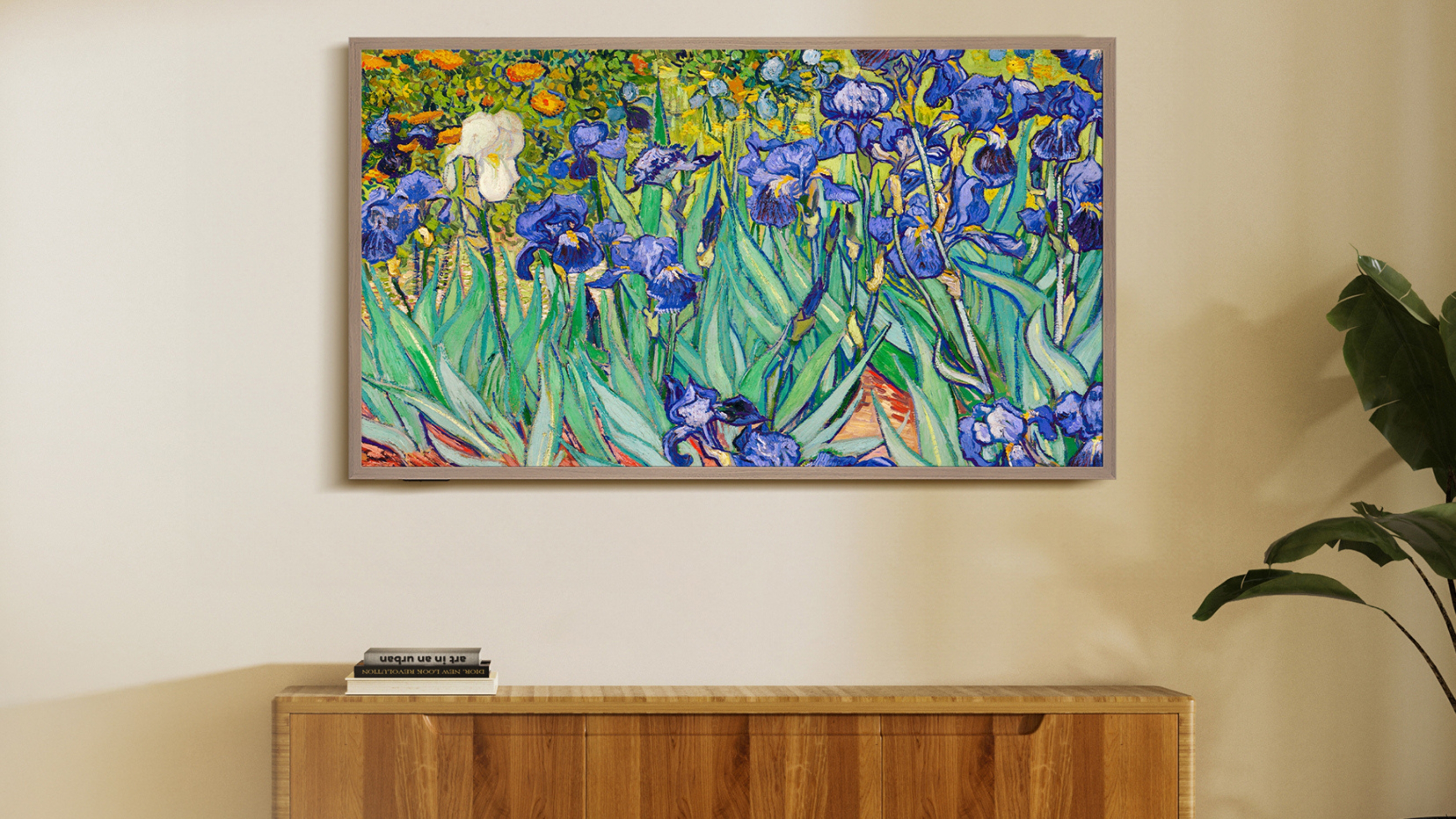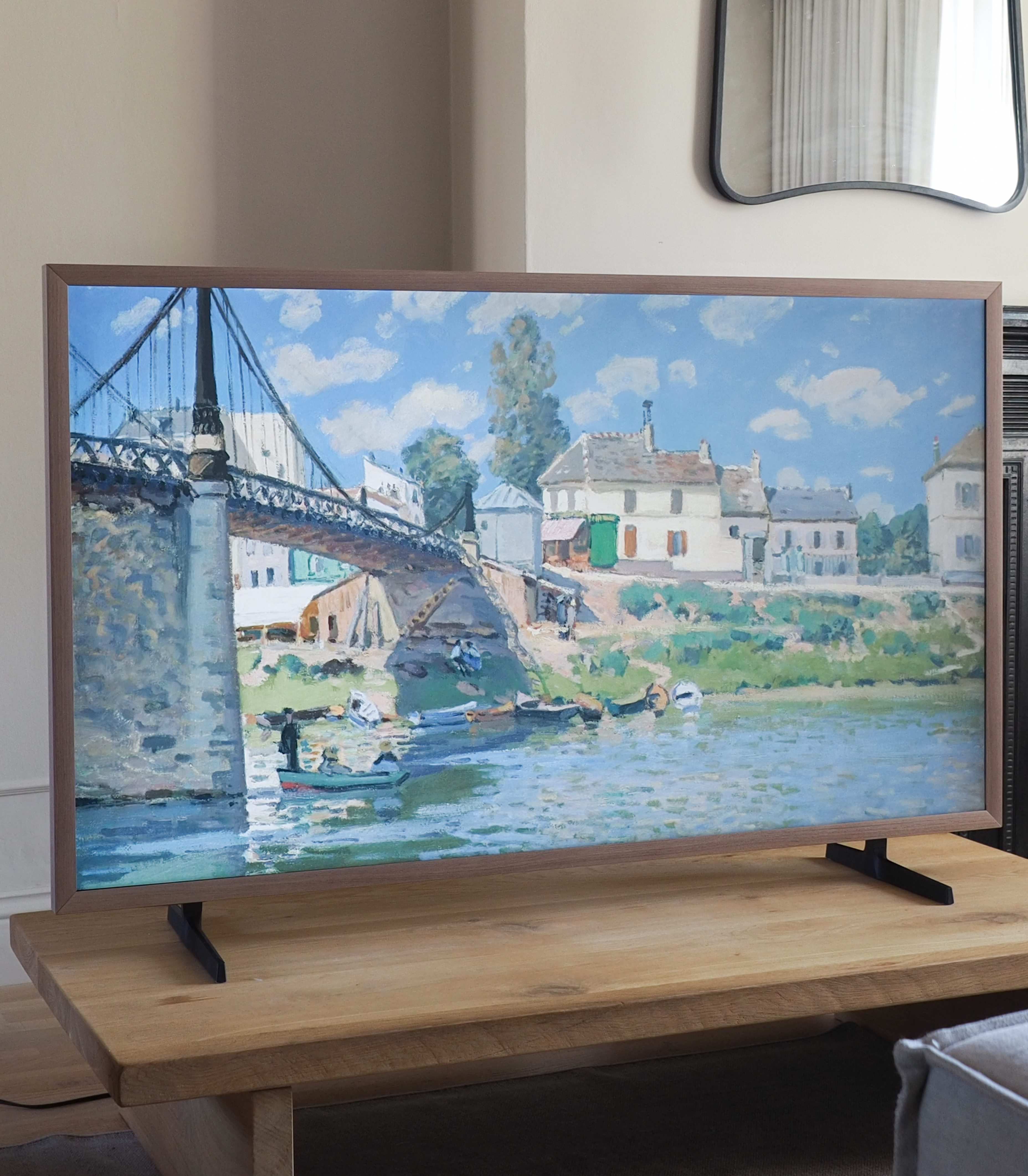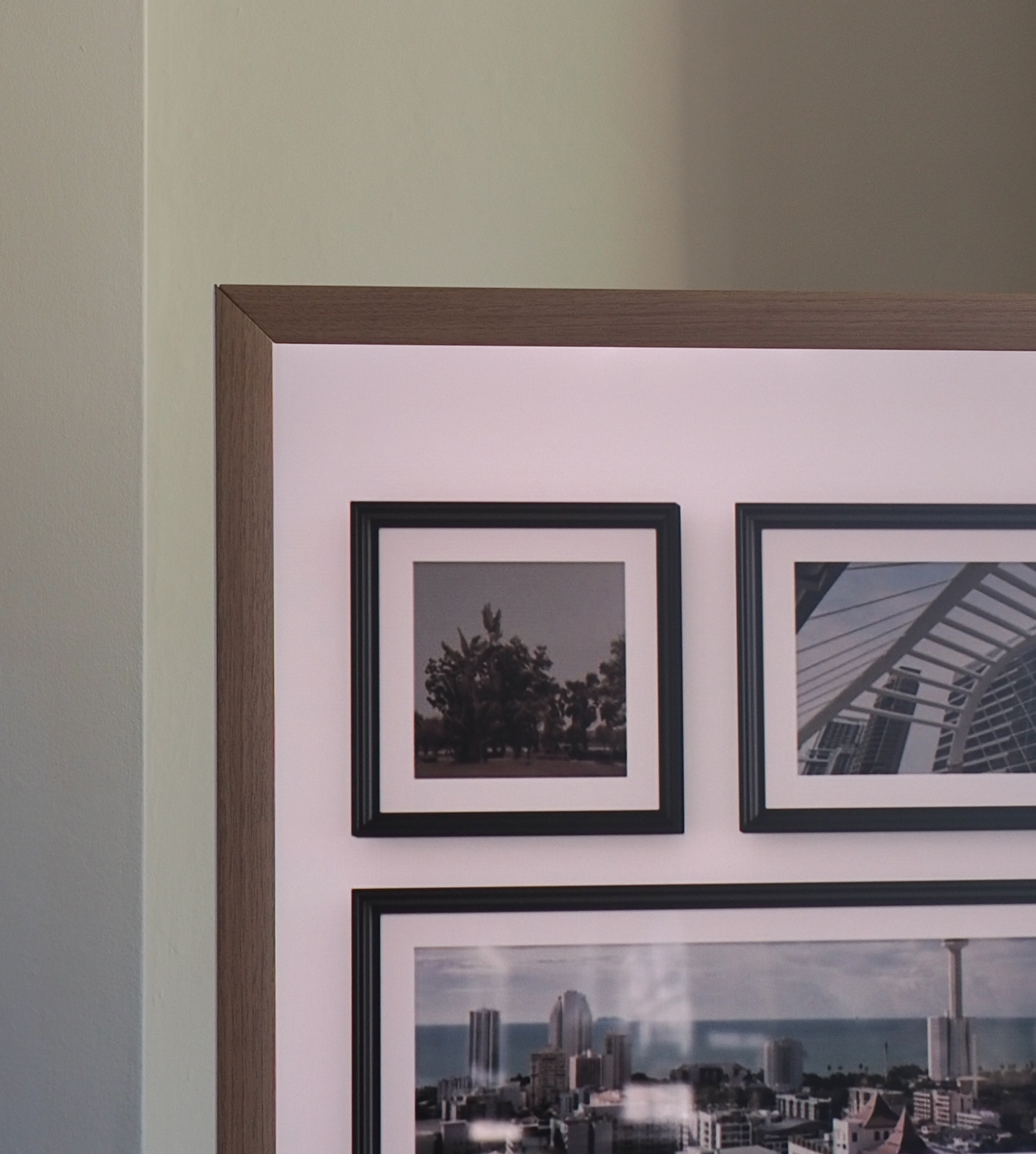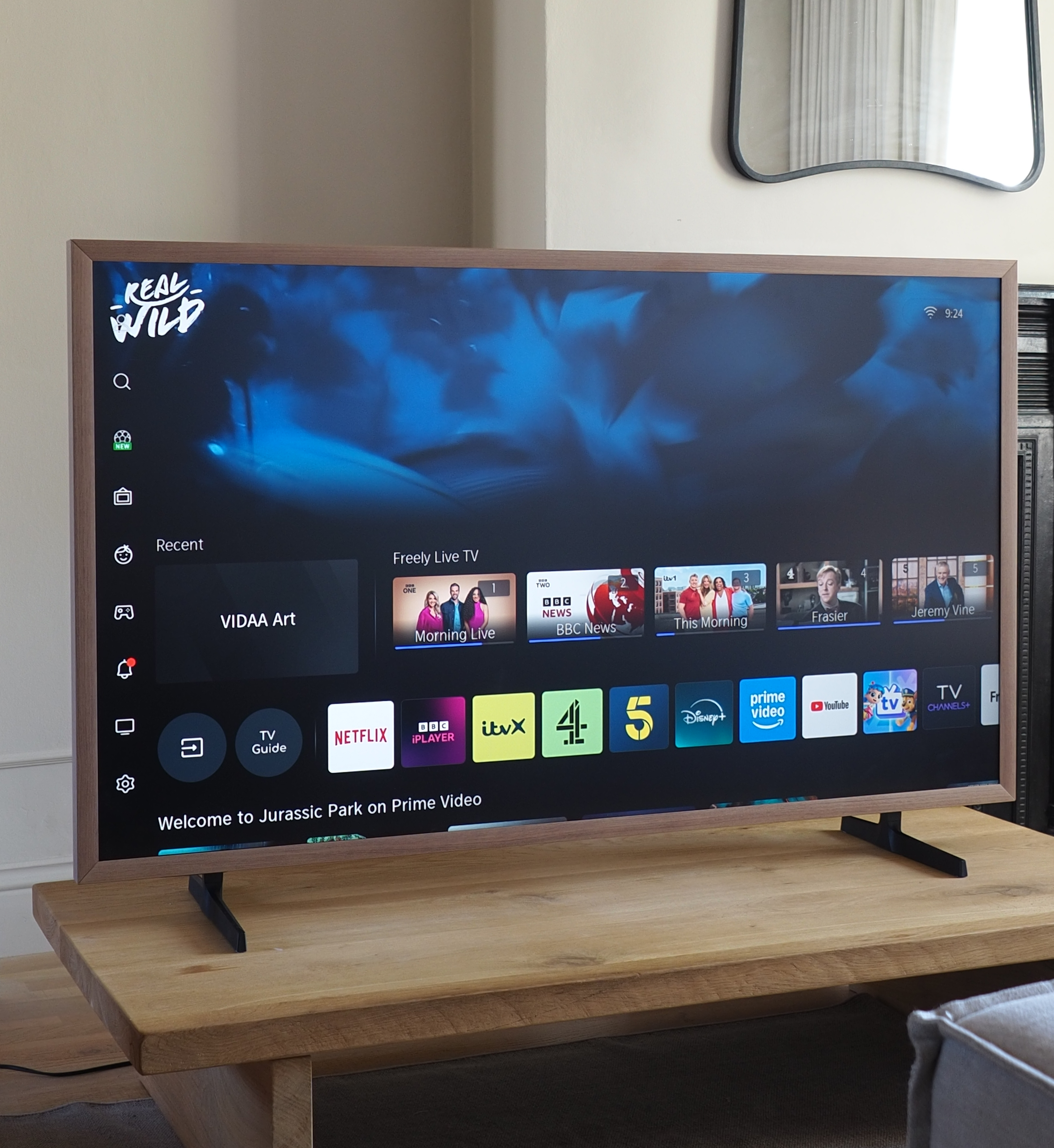Hisense Canvas TV Review — "You're Getting a Beautiful TV That's (Arguably) Worth More Than You Paid for It"
I tested the big challenger in the 'TVs that look like artworks' market — but does it stand up to the competition?

Hisense's Canvas might not stack up to top-of-the-line TVs in terms of picture quality and audio, but if you need a TV that looks aesthetic, or can be disguised as artwork on a wall, it's an attractive prospect, especially for the price.
-
+
Minimalist style with TV 'frame' included
-
+
Slim wall mounting
-
+
Cheaper than The Frame
-
+
Easy to set-up and responsive controls
-
-
Hard to hide wire when wall mounted
-
-
Limited size range
Livingetc knows design.

In the world of 'TVs that look like art', there has been one name that has monopolized the market for some time. However, with the launch of the Canvas TV, Hisense has become a challenger that's gathering some steam.
In reviewing the Canvas TV, with its sleek, ultra-thin body, super matte screen, and minimalist wall mounting, I'm aware that these so-called 'art TVs' inhabit a slightly different space than other TVs in the market. While reviews from serious TV buffs might find picture quality and audio lacking, if you're looking to buy this style of set-up, I'd hazard a guess that, like myself, style is a more prominent factor in your choice when television shopping, as long as the model you choose delivers good enough picture and sound quality (and we'll delve into those details a bit later).
Where Hisense's Canvas becomes a serious contender for the art TV crown is the price. While it's not a 'budget' set per se, it's on the cheaper end of the scale for designer-style TVs. By comparison, the Canvas 2025 retails on Currys at some £200 cheaper than The Frame by Samsung, both in 55" sizes.
Now, this review isn't totally a Hisense vs Samsung debate; however, given that both brands have TVs occupying this niche, it makes for an easy scale of quality. However, for clarity, any comparison I'm drawing is from the 2025 Canvas vs the 2024 The Frame (with the 2025 version having a lot of new features and improvements), as these are the sets I currently have in my home.
Does Hisense's Canvas TV Look Good?

Short answer: yes. Art TVs such as Hisense's Canvas tend to be uniform in the sense they have super fine bodies that aren't much thicker than actual picture frames. It has a minimalist wall mounting, which means it doesn't stick out more than a few extra millimeters, too.
Like The Frame, the Canvas has a matte display, which means less glare and fewer reflections in the screen, a necessity for making the art display mode look as realistic as possible.
Where, with Samsung's The Frame, you have to buy its magnetic frames, called Bezels, separately, the Canvas comes with a set of its StyleFrames inside the box. It's limited to teak-effect only right now, but realistically that's the best option anyway. The Canvas also comes with feet, if you don't want to wall mount, something that The Frame only offers through a separate-to-purchase floor stand. With how thin the Canvas TV is, though, I can't help but feel a little nervous around it as a freestanding TV in this way.

Let's talk art. Canvas does have a more limited selection of artwork and doesn't benefit from the same collaborations and events that Samsung has loaded into its Art Store. However, its 300-deep collection is free, though you need to sign up to the VIDAA art collection for most of it, whereas Samsung's full collection requires an extra subscription (though there's plenty for free). The art looks great on screen, but the collection is, necessarily, going to be to everyone's taste. You can, however, add your own pictures through a USB connection, and the likes of Etsy sellers even offer packages you can purchase.
Another drawback for Hisense is that it doesn't have the same 'invisible' cable connecting The Frame to its OneConnect box. That means, if you have the Canvas on the wall, you have a thick black cable to deal with.
Does It Have Good Picture and Sound Quality?
I'd read other reviews of this TV in anticipation of trying it, that suggested the screen brightness was an issue, however, I found this to not be the case (in fact, I often dim the brightness on art TVs to make the art setting look more realistic). The Canvas is a 4K QLED with Quantum Dot Colour. The screen is bright, colorful, and high definition, though I noticed some issues with the color banding, where gradients appear as distinct steps, rather than smooth color transitions.
The Canvas supports Dolby Vision, as well as HDR10+, and for gamers, it offers 144hz refresh rate instead of 120hz, though as our TV expert Alan Martin suggests, it's only a theoretical improvement: "[you] aren’t likely to notice unless [you] hook a PC up to it, as even the priciest consoles don’t offer many 120Hz experiences.
The Ultra Matte screen might be an idea introduced for the TV's art mode, but it's a gamechanger for watching TV on a sunny day regardless, and the TV uses an RGB light sensor to adapt the screen to the room, at any time of day.
The TV also boasts 2.0.2 surround sound, which feels loud and clear. It's not the most spectacularly rich sound I've heard from a TV, but it matches up with the competition.
Is the Canvas Easy to Use?

I set up Hisense's Canvas in, honestly, under 5 minutes, using a QR code to my phone, after downloading the VIDAA app. You could also use this app to link it up to your streaming platforms, which means you don't have to spend ages trying to input your email and password using an onscreen keyboard. You can also use it to easily play music, and show photos and videos from your phone's camera roll on the screen.
The app can be used to control the TV as well, though the (solar-powered but also rechargeable) remote is easy to use. It feels responsive, and there isn't lag (something you'll find some complaints about on older The Frame models).
I didn't, I'll point out, try the wall mounting system for this TV during my testing period.
Is It Good Value?
Whether you're buying it at the full price, or picking up a brilliant deal like the one on QVC right now, it's likely to be at least a few hundred pounds cheaper than its like-for-like competitor. And while the Canvas might not stack up to The Frame in every aspect, it can do some things better.
Sounds too good to be true? As our TV expert, Luke Edwards, told me, right now Hisense TVs are particularly good value. To get a foothold in the market, the Chinese brand is undercutting competitors such as Samsung and Sony, offering great value for good technology. Basically, you're getting a beautiful TV that's (arguably) worth more than you paid for it.
If you're a brand snob, you might still want to go for The Frame, but if value for money and good looks are your main criteria, this is probably the TV for you.

Hugh is Livingetc.com’s editor. With 8 years in the interiors industry under his belt, he has the nose for what people want to know about re-decorating their homes. He prides himself as an expert trend forecaster, visiting design fairs, showrooms and keeping an eye out for emerging designers to hone his eye. He joined Livingetc back in 2022 as a content editor, as a long-time reader of the print magazine, before becoming its online editor. Hugh has previously spent time as an editor for a kitchen and bathroom magazine, and has written for “hands-on” home brands such as Homebuilding & Renovating and Grand Designs magazine, so his knowledge of what it takes to create a home goes beyond the surface, too. Though not a trained interior designer, Hugh has cut his design teeth by managing several major interior design projects to date, each for private clients. He's also a keen DIYer — he's done everything from laying his own patio and building an integrated cooker hood from scratch, to undertaking plenty of creative IKEA hacks to help achieve the luxurious look he loves in design, when his budget doesn't always stretch that far.